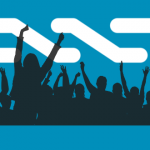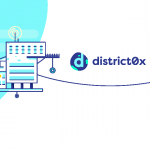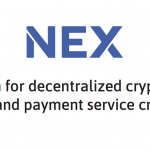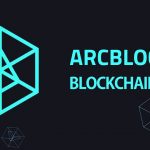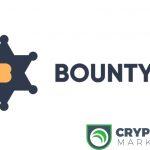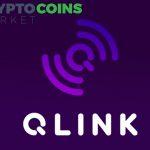The Raiden Network is an off-chain transfer network for Ethereum ERC20 tokens. Inspired by bitcoin’s Lightning Network, the technology would shift the majority of transactions off of the ethereum blockchain to create an alternate network of peer-to-peer payment channels.
The network is intended to massively increase transaction speeds, potentially enabling over a million transactions per second. Raiden also accommodates the exchange of tokens and features an API to facilitate interactions with decentralized applications.
BACKGROUND.
Blockchains do not scale well. Current public, permissionless blockchains are unable to achieve more than a low, fixed number of transactions per second. Ethereum has been shown to reach its cap at about 10 transactions per second. Short-term scaling solutions, like raising maximum computation performed per block by a constant factor, will not be able to support continued mainstream adoption.
The Raiden Network will provide a payment system based on payment channel technology that scales with the number of its users. This means that the bigger the Raiden Network becomes, the higher its maximum throughput will be, with practically no upper limit in sight.
Blockchains are slow. At the moment, Ethereum mines a new block approximately every 15 to 30 seconds. To reach practical finality of a transaction, confirmation times of several minutes have to be endured. This significantly degrades user experience and hinders mainstream adoption.
Raiden Network transfers are as fast as text messages. The moment you receive a signed Raiden transfer, you can be certain that you now hold the amount included in the transfer. There is no need to wait for any confirmations.
Using blockchains is expensive. Once a blockchain hits its limit, paying high enough fees to be included in a block becomes a competitive endeavor, as is the case with Bitcoin today. Ethereum will be no different, eventually leading to even higher confirmation times and transaction fees on the order of a few dollars per transaction. For the vision of a global, decentralized, and dependable computer this is highly detrimental.
Raiden Network transfer fees will be several orders of magnitude lower than on-chain transaction fees. Instead of paying for global consensus, you only pay for forwarding peer-to-peer consensus. Low fees allow for a long tail of new use cases which have not been practical before due to high transaction costs. Especially IoT and the Machine-to-Machine economy depend on being able to transfer tiny values. Raiden aims to be the predominant payment layer for these applications.
Ethereum transactions are public, whereas Raiden transfers will be private between the payer, the payee, and the nodes forwarding the transfer. When channels are settled, only the sum of transactions will become visible to the entire world.
HOW IT WORKS.
If you think of a blockchain as a universally trusted but very slow bank that charges you for wire transfers, then the Raiden Network offers checks that will never bounce back when cashed at that bank. Once you receive a Raiden check from someone, you can be absolutely certain that this check is real and that you are now richer than you were moments ago. But neither you nor your payer had to stand in line at the bank or wait for the clerk to perform a wire transfer.
You can decide to cash this check at the bank at any time, potentially with hundreds and thousands of other checks simultaneously and you only need to pay fees once when turning all of these checks in. If your payer had instead made a single wire transfer per payment, he would have paid a lot more in fees and both of you would have waited a lot longer for a confirmation. As a side-effect, the bank is happy too because this system significantly reduces internal workload.
What’s more, you don’t even need to be in contact with the person that wants to give you a check. It is entirely sufficient if you know someone who knows someone who eventually knows someone that knows this other person. They all pass checks on to each other until one finally reaches you. But all of them are only valid if you confirm to everyone that you have received yours in the end.
The Raiden Network will take care of connecting you and your partner through this network of bank customers and will make sure that all checks are as binding as actually visiting the blockchain bank for a transfer.
USE CASES.
Retail Payments.
There are quite a few high profile Ethereum token based projects competing to bring blockchain based payments to the masses. Especially in developing countries these efforts may potentially improve the life of millions. The Raiden Network can be a crucial building block, as significant adoption relies on scalable technology and competitive fees.
P2P Cash.
Cash as we know it is on the retreat as there is a trend towards cashless societies. Scalable blockchain based payments can help to preserve the private and decentralized nature of cash while updating its user experience to the expectations of a new generation.
Micropayments.
Blockchains are a hot candidate to become the payment infrastructure of the upcoming machine-to-machine economy. IoT may increase the number of commercial transactions by an order of magnitude - and the cheaper the cost of transfers become, the more use cases emerge.
Micropayments can be used to get fine grained access to APIs, bandwidth, computing power, storage, electricity, basically any infrastructure. The same goes for content or entertainment such as webpages, gaming, video or audio streaming.
Already today many proposed DApps rely on tiny payments between participants in the network to incentivise cooperative behaviour.
Instant Token Swaps.
Next to payments, the exchange of tokens is probably the second most prominent use case of blockchains. This is even more so the case, if the current trend of tokenization continues. Decentralized exchanges built on Raiden Network’s atomic token swaps feature allow to instantly exchange tokens at low cost.
RDN USES.
RDN token is not needed in the core of the Raiden Network. Essentially, opening or closing payment channels, sending transfers will not involve RDN at the protocol level.
RDN token is only used to pay for peripheral services in the network that, for example, assist with finding a path with sufficient capacity or provide channel monitoring services for offline users. Users running these services themselves will not need to pay these fees but can earn them instead.
The light clients in the Raiden Network, such as small computers installed on cellphones or cars, which would not wish to sync the entire blockchain, may use the RDN token to pay for such peripheral services in the system.
HOW ADVANCED IS IT?
A test network was deployed in September 2017 on the Raiden GitHub page. The testnet is a major milestone for the project, one that will lead to the next phase of development before the code is ready to launch on the live ethereum network.
SIMILAR PROJECTS.
Lightning Network.
The Raiden Network is very similar to the Lightning Network. In contrast to the Lightning Network, the Raiden Network supports all ERC20 tokens instead of being limited to the transfer of BTCs.
The technology behind the Lightning Network will improve upon the process by which Bitcoin transactions are validated. Currently, the process makes use of mining rigs, requiring that computers solve complicated math problems before the transactions can be recorded on the blockchain ledger. Because of the computing power required, a single transaction can take up to an hour to confirm.
With Lightning, however, this process would be significantly sped up. The Lightning Network would require that participants agree to transact on a separate, offline channel, and then the blockchain would update to reflect the external transaction.
Thus, the middleman of the mining rig or digital wallet provider could be skipped entirely. The developers of the network have indicated that its speed would enable it to “be used at retail point-of-sale terminals, with user device-to-device transactions, or anywhere instant payments are needed.” It is expected that Lightning would help Bitcoin to become competitive with other instant payment platforms and that it could revolutionize the way that peer-to-peer payments are transacted.
Sharding.
Sharding will allow Ethereum to significantly scale overall transaction capacity, basically by partitioning state over multiple chains. It’s a very important and needed improvement which is complementary to the Raiden Network. While sharding helps to scale, it will still have suboptimal latency, cost and privacy properties for token transfers, compared to the Raiden Network. In order to scale token transfer capacity using shards, cross-shard communication is necessary, which is expected to be even slower and similarly expensive as transfers on Ethereum. While sharding is important, it is not an optimal solution for token transfers.
Plasma.
Plasma is a proposed concept to scale transaction capacity using hierarchical trees of side chains. Similar to sharding, it will not be able to provide the latency and low fee properties as provided by the Raiden Network. Implementations of Plasma will be complementary to the Raiden Network.
IOTA’s tangle.
The main innovation behind IOTA is the Tangle, a revolutionary new block less distributed ledger which is scalable, lightweight and for the first time ever makes it possible to transfer value without any fees.
Contrary to today’s Blockchains, consensus is no-longer decoupled but instead an intrinsic part of the system, leading to decentralized and self-regulating peer-to-peer network. Users of the network validate two old transactions (via proof of work) in order to be able to conduct one of their own. No one receives a reward and no one has to pay transaction fees.
Concerning token transfers, current implementations of tangles require a lot of computational resources because transaction mining and validation are combined into a single process. This makes them largely unfit for less powerful systems such as smartphones or IoT devices. In contrast, Raiden transfers are quick to create, requiring only a single elliptic curve signature to be computed.
The Trustlines Network implements the original Ripple Idea on Ethereum. Here money may be denominated in real-world fiat currencies, while existing as IOUs between friends that have entered bilateral credit-line agreements. Payments between non-trusting strangers are implemented by rippling balance updates through a network of trustlines (i.e. a chain of friends-of-friends), until the payment reaches the receiver. In such a complementary currency setup, money is decentrally issued by users, based on credit given by trusted friends.
Both trustlines and Raiden are based on the idea of channel networks and are complementary. At some point, Trustlines could be built on top of the Raiden Network.
USER REVIEWS.
[The Raiden Network cannot support large transfers.]
[This is partially true. The Raiden Network is not intended to support large value transfers. A Raiden transfer requires each channel on a route through the network to be able to relay the desired amount. The bigger a transfer, the lower the probability that there is a route of channels, each of which is able to support the transfer. Currently, we recommend performing large-scale transfers on-chain. In the future, large transfers might simply be split up over multiple channels.]
[Is Raiden needed really? They should accept VB’s fund but not from public ICO, so I think the team is too greedy. EOS has super parallel scheme for transactions. Why we need Raiden]
[Hopefully Plasma will end up working so well that Raiden becomes redundant]
[So what does this mean for 0x?]
[It is not a token relayer, or a relayer protocol like 0x is. instead, Raiden acts a payment channel for many small transactions between users. when a channel is closed it is settled to the main Ethereum chain]
[So… What’s the point of on chain usages?]
[On chain will always be needed, as it’s used as a “settlement layer” on Raiden. Some people have a fear of Raden’s concept because of centralization, but I don’t think it’s a problem, as anyone can run a node, and even if you use 3rd party node service, you can always add redundancy and decentralize things. Raiden HUBs (when they arrive) will be only a “facilitator”, won’t require trust, won’t be a central point of failure or censorship, and will always be easily swappable.]
[Anyone can run a node, sure. But opening a channel takes gas ($$), and if you want to run state channels with high availability, you’ll need lots of connections.]
[Not trying to troll or anything, but essentially it’s going to take another 1 - 1,5 years?]
[Because the RDN token is useless and toxic to the system. Lightning Network on Ethereum is good, but a shittoken is not. ]
[It does sound like they tried to copy IOTA, but there are still fees]
[Based on my understanding, I’ll take a stab at the differences.
A little explanation on Raiden first:
Raiden is like little bookie using a big bookie when they take bets. For the sake of this example, Raiden is the small bookie and Ethereum main chain is the big bookie. Ethereum takes a 10% spread for taking bets. So little Raiden goes to Ethereum and says, “yo, I’m going to take $1,000 dollars worth of bets today”, and Ethereum tells her “sure, I’ll put you in the books for $1,000 bucks.” Little Raiden goes around her friends taking bets and recording them down. Since Raiden is the bookmaker for her friends she decides to give them great spread of only 1% so they don’t pay so much. By the end of the day, Raiden settles her bets with all her friends. Then, she goes to Ethereum and settles with Ethereum while summarizing what happened that day and Ethereum makes a record of it. If the accounting is all good, Ethereum will tell Raiden it’s all ok.
Differences:
Raiden is like paying for a hooker (transactions) and sharing it with your friends (transactions on layer 2) so the cost is cheaper but the pimp (Ethereum) still gets his cut and keeps an eye on you to make sure his girl is ok (confirmed on the main chain and recorded to the ledger).
IOTA is like a long term relationship, sex is free (transactions) but you gotta work for it like chores and other lame tasks (confirmations).
I hope it didn’t offend anyone with my examples, it’s the best I can think of because I like sex and gambling.]
[comparing raiden with iota is apples and oranges:
raiden, lightning , flash networks … are payment channels
eth, btc, iota are not
each blockchain in theory can add payment channels. it’s not scaling it’s just usefull in some usecases. iota also has paymentchannels it’s called flash network. and is actualy cheaper then lightning and raiden. to use .]
[Payments channels implemented in Raiden are THE way to go, BUT it begs the question how useful are they (compared to Bitcoin which is used in real world transactions for physical stuff) in Ethereum network? There are no micro payments widely used in Ethereum network, it is mostly used for ICOs and all the good projects (from prediction marketplaces, real estate platforms, insurance daps etc.) are still yet to be implemented and proven - and then and only then, this projects can use payment nodes to utilize benefits of the Raiden upgrade. I think development should be more useful if focused on sharding/PoS in this stage.]








